A SELFIE segítséget nyújthat iskoláinknak abban, hogy a technológiát célirányosan, átfogó módon építsék be az oktatási és tanulási folyamatokba. Az iskolavezetők, a tanárok és a diákok álláspontjának egybegyűjtése fontos szerepet játszhat abban, hogy Európában az oktatás megfeleljen a digitális korszak kihívásainak.
Get Started for FREE
Sign up with Facebook Sign up with X
I don't have a Facebook or a X account

| Tags |
|---|

 Your new post is loading... Your new post is loading...
 Your new post is loading... Your new post is loading...
Today’s workforce has become a dynamic ecosystem. Only 42 percent of this year’s survey respondents tell us that their organizations are primarily made up of salaried employees, and employers expect to dramatically increase their dependence on contract, freelance, and gig workers over the next few years. As alternative work arrangements become more common in the broader economy, HR and business leaders are rapidly trying to plan and optimize their own workforce ecosystems, pressured by the need to improve service, move faster, and find new skills.
Pál Kerékfy's insight:
A Deloitte legfrissebb felmérésében csak a válaszadók 42%-a mondta, hogy elsősorban munkavállalókkal dolgoznak. Az egyéb formák (szerződéses, szabadúszó, “gig” és “crowd”) is nagyon fontos szerepet játszanak.
Fontos problémaként jelenik meg ezeknek az embereknek a céghez való viszonya! Nincs még akkora elkötelezettségük sem, mint a dolgozóknak, egyáltalán nem terveznek hosszú távra, viszont nagyon könnyen váltanak. A helyzetet az is súlyosbítja, hogy csak a cégek 29%-a figyeli, hogy betartják-e a szerződéseket, és 32% követi a munkájuk minőségét. Számomra ezek döbbenetes és érthetetlen arányok! Hogy lehet így céget vezetni? Részleges magyarázat is van a felmérésben: általában a beszerzési osztályok foglalkoznak ezekkel az emberekkel. Ott viszont nincs meg a képesség sok-sok ember egyedi kezelésére.
A problémához az is hozzájárul, hogy egészen a legutóbbi időkig nem fordítottak kellő figyelmet az alternatív munkavégzési formákra a HR-szoftverek fejlesztői. Ez megmagyarázza, hogy miért nem a HR-osztályok foglalkoznak ezekkel az emberekkel. Neki kell ugrani a helyzet kezelésének, mert nem tűnnek el, sőt gyakoribbá válnak az új munkavégzési formák.
#Deloitte #HR #CHRO #HumanCapital #crowdworking #gigworker #HRIS #freelance
Organizations are no longer judged only for their financial performance, or even the quality of their products or services. Rather, they are being evaluated on the basis of their impact on society at large—transforming them from business enterprises into social enterprises.
Pál Kerékfy's insight:
A Deloitte legfrissebb felmérése szerint gyökeresen megváltozik a cégek viszonya az emberekhez (befelé és kifelé is). Nő a felelősségük a saját embereik sorsáért, és nő a felelősségük a társadalomért, a világ folyásáért is.
A “social enterprise”, amit nehezen tudnék tömören magyarra fordítani, olyan vállalat, amelyik jelentős figyelmet fordít a külső szereplőkkel való kapcsolatára (ebbe az egész társadalmat is beleértve), és belül szimfonikus zenekarként, együttműködő csapatok hálózataként működik. Talán “társadalmi vállalkozás” lehetne a neve – de ez nem igazán jól írja le, hogy miről van szó.
Ez a “szimfonikus zenekar” azt is megköveteli, hogy a cég vezetői egységes csapatként is dolgozzanak, miközben a saját szakterületüket vezetik.A mai és jövőbeli feladatok az emberekkel és a társadalommal kapcsolatban olyan nagy jelentőségűek, hogy azokat nem lehet kiadni alacsonyabb szintű vezetőknek, és nem lehet egymástól elkülönülten kezelni.
Úgy érzem, hogy olyan vezetési modellről van itt szó, ami sok-sok üzleti (és háttérterületi) vezető számára meglehetősen idegen. Hogy fognak felnőni ehhez a feladathoz – ha valóban ez a feladatuk? #Deloitte #HR #CHRO #HumanCapital #SocialEnterprise
Enjoy the best moments of our inaugural Hackathon showing some of the most unexpected collaborations and innovative performances, beautifully accompanied by PREM’s composition '2030'. The world-famous Abbey Road Studios, where many of The Beatles’ most popular songs were recorded, is looking to support music innovation through technology, and recently held its first hackathon event. The studio runs a musictech incubation programme called Abbey Road Red. The hackathon in November 2018 gathered 100 participants to explore new ways of using technology to create and consume music. The participants – comprised of programmers, technologists, developers and music producers – were given a number of questions to guide their creations, including “How will artists create music in 2030?” and “Can you play or create music using emotions to trigger different sounds, samples, parameters or effects?”.
Pál Kerékfy's insight:
Ilyen kérdéseket tett fel az Abbey Road Studios annak a 100 informatikusnak és zenei szakembernek, akik novemberben összegyűltek ott bemutatni a tudományukat. Az egyik bemutatott eredmény a reppelő robot volt. #AbbeyRoad #AbbeyRoadStudios #AbbeyRoadRed #startup #hackaton #music #AI #artificialintelligence #incubation #inspiration video: https://www.youtube.com/watch?time_continue=8&v=KUfeY6RGS9U cikk: https://media.bitpipe.com/io_14x/io_142879/item_1856581/CWE_080119_ezine_pp27.pdf
The researchers started with 140,000 hours of YouTube videos of people talking in diverse situations. Then, they designed a program that created clips a few seconds long with the mouth movement for each phoneme, or word sound, annotated. The program filtered out non-English speech, nonspeaking faces, low-quality video, and video that wasn’t shot straight ahead. Then, they cropped the videos around the mouth. That yielded nearly 4000 hours of footage, including more than 127,000 English words.
Pál Kerékfy's insight:
Az elmúlt napokban kétéves kutatásokról írtam. Ez sokkal frissebb, tavaly nyáron publikálták a Cornell University kutatói. Az ő szoftverük már nem csak BBC-műsorokon, hanem YouTube-videókon nevelkedett, és minden eddiginél jobb eredményt ért el. A vizsgálatban részt vevő profi szájról olvasók 93%-ot tévedtek, a korábbi szoftver 77%-ot, ez pedig csak 41%-ot. Ez még mindig sok, de a helyesen felismert szavak aránya több mint nyolcszorosa, mint az emberek esetében. Ez a program már arra is figyel, hogy egy hangot másképp formázunk az ajkainkkal különböző hangok előtt és után. Természetesen, továbbra is szükséges, hogy szemből és jól lássa a beszélőt. Lassan elérjük a használhatóság szintjét! #CornellUniversity #YouTube #lipreading #AI #artificialintelligence #mestersegesintelligencia
Artificial intelligence is getting its teeth into lip reading. A project by Google’s DeepMind and the University of Oxford applied deep learning to a huge data set of BBC programmes to create a lip-reading system that leaves professionals in the dust.
Pál Kerékfy's insight:
Itt a folytatás, amit tegnap ígértem.
Szintén az oxfordi egyetem, szintén Google (DeepMind), de most nem külön erre a célra készített felvételeket, hanem rendes BBC-műsorokat (köztük: Newsnight, BBC Breakfast és Question Time) használtak a kutatók. 5000 órányi (2010 és 2015 között felvett) műsort használtak a gép tanításában, majd 2016 márciusa és szeptembere között vizsgáztatták. A hibátlanul leírt szavak aránya 46,8% volt. Ez nem tűnik soknak, de a profi szakembernek csak a negyede (12,4%) jött össze.
A tanítás során azzal a problémával is találkoztak, hogy sok felvételen nem volt szinkronban a hang és a kép, akár másodperces csúszás is lehetett. Azt is meg kellett tanítani a gépnek, hogy küszöbölje ki az elcsúszás hatását.
Van még hova fejlődni, de mindenképpen imponáló a négyszeres pontosság!
#Google #Alphabet #DeepMind #OxfordUniversity #AI #artificialintelligence #mesterségesintelligencia #lipreading #BBC
There is increasing recognition that GDP measures or GDP per capita are insufficent when it comes to understanding the true economic well-being of households. That has resulted in research becoming increasingly focused on household income with a higher emphasis on income inequality. A recent OECD paper analyzed the distribution of household wealth across 28 countries. The situation is by far the worst in the United States where the richest 10 percent of households own 79 percent of the wealth. The bottom 60 percent of American households only own 2.4 percent of household wealth. The situation is the same in Europe where the inequality gap is particularly wide in some countries. In the Netherlands, 68 percent of wealth is owned by the top 10 percent of households while in Denmark, the figure is 64 percent. The OECD found that in both countries, the share of wealth held by the bottom 60 percent of households is negative, meaning that on average, they have liabilities exceeding the value of their assets.
Pál Kerékfy's insight:
Ez egy hosszú ideje létező ördögi spirál. A vagyon és a jövedelem a fejlett országokban nagyon durván koncentrálódik, gyorsan nőnek a jövedelmi és vagyoni különbségek. A tőke szempontjából ez nem azért baj, mert “igazságtalan”. A baj az, hogy a gazdagok viszonylag sokkal kevesebbet költenek, így a pénz kivonódik a gazdaságból, nem generál keresletet. Ha alacsony a kereslet, csak olcsón lehet termelni. Egyre kevesebb embernek lesz rendes jövedelme, a kereslet tovább csökken. A költségcsökkentési nyomás növeli az automatizációt, amitől (talán csak ideiglenesen, néhány évre vagy évtizedre) csökken a munkahelyek száma. Folytatódik az út lefelé a spirálban…
A legrosszabb helyzetben Észak-Amerika és Nyugat-Európa van. Egyes országokban a skála alsó 60%-ában lévő háztartásoknak negatív az átlagos vagyona! (Több mint a fele a háztartásoknak élhet nagyon súlyos adósságcsapdában!)
A szokásos mérőszám (az egy főre eső bruttó hazai termék) rossz, ezt egyáltalán nem mutatja. Másképp kellene mérni az országok gazdasági egészségét!
Ez a grafikon egy nagyon részletes, 28 országot bemutató OECD-tanulmány egy kiragadott adatát mutatja be. A teljes tanulmány (angol, 70 oldal) itt található: https://read.oecd-ilibrary.org/economics/inequalities-in-household-wealth-across-oecd-countries_7e1bf673-en#page1
Biztos érdekel többeket Magyarország helyzete. Az egyenlőtlenség területén jól állunk, 18 ország áll nálunk rosszabbul a 28-ból. Ennek nem kell nagyon örülni, mert nálunk is fokozódik majd az egyenlőtlenség… Itt egy részletes táblázat: https://read.oecd-ilibrary.org/economics/inequalities-in-household-wealth-across-oecd-countries_7e1bf673-en#page16
Nem akarok úgy csinálni, mintha értenék a világgazdasághoz, de csak elmondom, hogy szerintem valami radikális változásra van szükség a jövedelmek elosztásában. Nem folytatódhat az a rendszer, hogy az értéket előállító emberek a lehető legkevesebb pénzt kapják a munkájukért, mert így a rendszer saját magát öli meg... #OECD #USA #Netherlands #Denmark #Germany #UK #Canada #France #Hungary #inequality #wealth #automation #robotics #GDP
There's a lot of hype about artificial intelligence, and it's important to understand this is not general intelligence like that of a human. This system can read faces and grade papers but it has no idea why these children are in this room or what the goal of education is. A typical AI system can do one thing well, but can't adapt what it knows to any other task. So for now, it may be that calling this "intelligence," isn't very smart.
Pál Kerékfy's insight:
Tegnap ugyanennek a mesterséges intelligencia fejlesztésébe dollármilliárdokat befektető embernek az aggasztó jövőképéről írtam.
Ebben az interjúban mond valami nagyon fontosat, ami módosítja azt a borús képet. A mesterséges intelligencia nem is hasonlít az emberi intelligenciára! Ezek a gépek egy-egy szűk területen tudnak valamit nagyon jól, esetenként a humán szakértőnél is jobban, ugyanakkor sokkal gyorsabban elvégezni, de nem látják át az egészet. Ahogy ő mondja: “Ez a rendszer olvas az arcokról, osztályozza a dolgozatokat, de fogalma sincs, hogy miért ülnek a gyerekek a tanteremben, és mi az oktatás célja.”
Vagyis, megint ott vagyunk, hogy találjuk meg a nekünk (embereknek) való feladatokat, és azokban legyünk nagyon jók. A többit hagyjuk a gépekre!
Az általános mesterséges intelligenciáról (artificial general intelligence, AGI) azt mondja, hogy a következő 30 évben nem jön létre, de talán soha sem.
Miért? Hisz az emberi lélek szentségében! (“I believe in the sanctity of our soul.”) Nem értünk rengeteg dolgot az emberrel kapcsolatban. A szeretetet és az együttérzést nem lehet számítógépes algoritmusokkal és neurális hálókkal megmagyarázni.
#future #AI #artificialintelligence #mestersegesintelligencia #munkahely #job #robot #automation #education #love #compassion #AGI
AI is the most empowering of all technologies because it effectively makes anyone who uses it smarter. It increases the productivity of anyone who can apply it to their job.
Pál Kerékfy's insight:
Nem tudom, mennyire van igaza – szeretném azt hinni, hogy jól látja a helyzetet. A múltból hozott példákkal mindig az a baj, hogy nehéz eldönteni, mennyiben alkalmazhatók a jövőre. Az érvelésének alapja az, hogy az automatizálás, a robotok, az okos gépek egy-egy területen drasztikusan fogják csökkenteni az egyszerűbb tevékenységek költségét, és erre a gazdasági szereplők a bonyolultabb területeken való növekedéssel válaszolnak majd, vagyis embereket vesznek fel. Hoz is erre példákat (ATM, gépi fordítás). Az amerikai munkaügyi statisztikai hivatal (BLS, Bureau of Labor Statistics) sok területen jósol növekedést a mesterséges intelligencia hatására (nem ellenére!). Mi lesz azokkal, akiknek tényleg elveszi az “egyszerű” munkáját a gép? Feljebb lépnek egy lépcsőfokkal, bonyolultabb, több tudást igénylő munkájuk lesz. A mesterséges intelligencia nagyobb változást hoz, mint bármilyen eddigi technológia – következésképpen jobb hellyé teszi a világot. “AI will be bigger than electricity, bigger than mechanization, bigger than anything that has come before it. It, too, will make the world a better place and, yes, create jobs.” #AI #artficialintelligence #mestersegesintelligencia #job #munkahely
A körforgásos gazdaság koncepciója lépésről-lépésre nyerte el a jelentőségét az európai környezetpolitikában. Közel tíz év előzmény és előkészítési munka után, az Európai Bizottság 2015 decemberében mutatta be a Körforgásos Gazdaság Csomagot (Circular Economy Package - CEP). | HBH Stratégia és Fejlesztés
Pál Kerékfy's insight:
Na, persze, nem arról van szó, hogy körbe-körbe megyünk, és nem jutunk sehova! Ez a körforgás a fenntarthatóság egy újabb elemét helyezi előtérbe: az ismételt felhasználást. Nem csak - és nem elsősorban - azt találom fontosnak, hogy kinyerik az életük végét elért termékekből az anyagokat. Még jobb az, ha egy új teljes élete lesz a cuccnak. #circular_economy #second_life #refurbished
A Magyar Máltai Szeretetszolgálat Egyesület, a Magyar Nemzeti Bank részéről „Országos pénzügyi fogyasztóvédelmi hálózat kiépítésére és működtetésére” kiírt pályázaton lehetőséget kapott arra, hogy Pénzügyi Navigátor Tanácsadó Irodát létesítsen Veszprém megyében.
Pál Kerékfy's insight:
Az MNB fogyasztóvédelmi hálózatot hozott létre Pénzügyi Navigátor néven. Az irodahálózat tagjainak üzemeltetésére pályázatot írtak ki. Veszprémben a Magyar Máltai Szeretetszolgálat nyitott irodát az Óváros téren, ahol az MNB szakmai segítségével végzik a tanácsadó tevékenységet. A szolgáltatás mindenki számára ingyenes. Az országban már sok helyen működik ilyen iroda, sőt online is terjeszti a tudást és a segítséget a bank. Mindenkit vár az MMSZ az Óváros téri irodában, akinek a pénzügyekkel és biztosításokkal kapcsolatos kérdése van. (Sajnos a nyitvatartási időt még nem sikerült kiderítenem, de igyekszem.) Szerintem ez egy nagyon jó és fontos szolgáltatás! Annyi embernek hiányosak az ismeretei, nem érti a fogalmakat és a pénzügyek működését. #MNB #MMSZ #navigátor #pénzügyi
With machine learning, programmers don't encode computers with instructions. They train them. If you want to teach a neural network to recognize a cat, for instance, you don't tell it to look for whiskers, ears, fur, and eyes. You simply show it thousands and thousands of photos of cats, and eventually it works things out. If it keeps misclassifying foxes as cats, you don't rewrite the code. You just keep coaching it.
Pál Kerékfy's insight:
Szemléletesen mutatja be a különbséget a hagyományos programozás (kódolás) és az “okos” gép tanítása között. Ismerős, ugye? A gyereknek se úgy tanítjuk meg a macska felismerését, hogy a bajuszáról, a füléről, a szőréről vagy a szeméről beszélünk neki. Egyszerűen csak azt mondjuk egy macskára, hogy “macska” (esetleg “cica”), és a gyerek gyorsan megtanulja. Mire elkezd beszélni, egész biztos nem keveri össze a macskát a kutyával vagy a rókával. Nincs is szükség sok ezer különböző macskára ehhez.
Az “okos” gép sokkal alacsonyabb szintű mentális képességekkel rendelkezik, mint egy pici gyerek! Sokkal több tanításra van szüksége, de így is kiterjedten használják a mindennapi életben. A gépi tanulásnak van szerepe abban, hogy a Facebook mit rak elénk, a Google hogyan ismeri fel fényképről az embereket, a keresője kitalálja, hogy mit keresünk.
Ez a cikk egyértelműen pozitívan szemléli a gépi tanulás új, a neurális hálókon alapuló módszereit. Korábban írtam egy-másfél évvel későbbi cikkekről, amelyek egyetemi kutatásokra alapozva fogalmaznak meg komoly kétségeket:
Kinek lesz igaza? Meglátjuk! Valószínűleg még én is...
#AI #artificial_intelligence #machine_learning #artificialintelligence #machinelearning
Ma már a bankban keletkező valamennyi üzleti igény (beleértve a projekteket is) data governance validáción esik át a megvalósítást megelőzően, ami elengedhetetlen a működő data governance tevékenységhez. Az elemzés kiterjed az érintett adatok, adatkörök adatminőség-vizsgálatára is, amit szintén már az igényfelmérés szakaszában egyeztetünk az adott területekkel, illetve az adatgazdákkal. Ezzel egyrészt világosabbá válik az igény (transzparensek a referenciaadatok), másrészt az igényben megfogalmazott kontrollpontokat használhatjuk a felhasználói tesztek során, valamint később az éles rendszerekben is adatminőségi célokra. A folyamatban az informatikai terület ma már csak akkor fogad be adatigényeket, ha azok átestek a Data Office-elemzésen, mert ez előrevetíti, hogy adottak lesznek a hatékony megvalósítás és a törvényi megfelelés előfeltételei.
Pál Kerékfy's insight:
Ma ez a cikk jött szembe, ami a CIB Bankban folyó munkáról szól, pár napja pedig a Metropolitan Egyetemen az egyik MBA-s hallgatóm tartott előadást banki adatvagyon-gazdálkodásról egy másik bank példája alapján. A jelek szerint eljött ennek is az ideje a bankokban! Jó hír! Előbb-utóbb nem csak a vezetés, hanem az ügyfelek is érezni fogják annak a hatását, hogy egységesen, értelmesen kezelik és elemzik az adatokat, információkat. @IDC_EMEA @intesasanpaolo #data_governance #adatvagyon #CDO #CIB #IDC |
Nincs ember. Ez ma a hazai vállalatok talán legsúlyosabb problémája. Ráadásul „sok az eszkimó – kevés a fóka”, vagyis az alkalmas jelöltekre rengeteg cég vadászik. A vágyott szakemberek – különösen a magasan kvalifikáltak, a tapasztaltabbak – dolgoznak valahol, állásban vannak, aktívan nem keresnek munkát. Ezek az úgynevezett passzív álláskeresők nem nézegetik az álláshirdetéseket, de ha egy vonzó ajánlatot kapnak esetleg felfigyelnek rá. A kérdés leginkább az, hogyan jutnak el hozzájuk ezek az ajánlatok?
Pál Kerékfy's insight:
Nem csak az a kérdés, hogy mivel lehet rávenni az embereket, hogy hozzánk jöjjenek dolgozni. Előbb el kell juttatni hozzájuk valamilyen nagyon vonzó pozitív üzenetet, ami miatt egyáltalán felmerül ez a lehetőség. Hogyan juttatjuk el hozzájuk? Jó dolog az álláshirdetés, de sok van belőle, és a passzív álláskeresők (akik nem keresnek, mert jó nekik, ahol vannak) nem is olvassák ezeket. Na, de, mit olvasnak?
Olvassák a barátaik és ismerőseik megnyilvánulásait a közösségi terekben (Facebook, LinkedIn, Twitter, …). Ha tőlük hallanak a cégről (és jót hallanak), akkor hajlamosak lehetnek elgondolkozni a váltáson.
Írnak a dolgozóink a Facebookon a cégről? Ha igen, mit és miért? Ha nem, miért nem? Lehet őket ösztönözni arra, hogy aktivizálják magukat? Igen, erről szól a közösségi toborzás. Mi az? A hivatkozott cikk röviden bemutatja.
Itt pedig még többet lehet olvasni róla: https://thriveglobal.com/stories/the-staggering-impact-of-employee-advocacy-on-content-marketing/
#employeeadvocacy #HR #job #employee
Crowd employment is a new form of employment, defined in a 2015 Eurofound report on New forms of Employment as employment that ‘uses an online platform to enable organisations or individuals to access an indefinite and unknown group of other organisations or individuals to solve specific problems or to provide specific services or products in exchange for payment’. Crowd employment is also known as crowd sourcing or crowd work, and aims to organise the outsourcing of tasks to a large pool of online workers rather than to a single employee. Technology is essential in this new employment form, as the matching of client and worker, as well as task execution and submission, is mostly carried out online. This form of employment is based on individual tasks or projects, rather than on a continuous relationship. A larger task is divided into smaller subtasks that are relatively simple or standardised, can be done independently of the other tasks and have a specific output.
Pál Kerékfy's insight:
A munkavégzés sajátos formája a crowd employment. Az a lényege, hogy nem a cég munkavállalói végzik a munkát, nem is egy-egy ember végez el egy nagyobb tevékenységet, hanem sok ember végzi a sok kis részre felbontott munkát. Nem tipikus az állandóság sem, inkább az a jellemző, hogy változnak a résztvevők. Általában egymástól függetlenül dolgoznak, és valamilyen online platform jelenti a kapcsolatot az emberek és a cég között.
Jellemzően olyan emberek dolgoznak ilyen módon, akiknek fontos és értékes a rugalmas munkabeosztás és az otthoni munkavégzés. Nagy részük nő.
Van egy sajátos formája a munkaviszonynak, ami hasonlít erre. Ez a “munkakör megosztása”, amikor két vagy több ember köt közösen munkaszerződést egy munkáltatóval, egy munkakör ellátására. Az ő helyzetük annyiban más, hogy együtt kell működniük, egyetemleges a felelősségük a munka elvégzéséért.
#EU #crowdwork #crowdworker #crowdemployment #outsourcing #online #digital
Quayside, a developing “smart city” on the southern edge of Toronto’s downtown, has been forced into an ethical debate as to how privatisation could pose a threat to individual privacy rights. Sidewalk Labs, an infrastructure division owned by Google’s parent company Alphabet, lost one of the project’s lead policy experts and privacy consultants after she was informed that third parties would be able to access the personal data of Quayside residents without a deletion or anonymisation process. “I imagined us creating a Smart City of Privacy, as opposed to a Smart City of Surveillance,” Cavoukian wrote in her resignation letter. “That’s just not on. Your personal information, your privacy is critical. It is not just a fundamental human right. It forms the foundation of our freedom.”
Pál Kerékfy's insight:
Torontóban terveznek egy új városrészt, ami csupa okosság és technológia lesz. Ebben a hírben arról van szó, hogy lemondott az egyik vezető, mert tisztázatlan, hogy az összegyűjtött személyes adatokat ki fogja kezelni, ki fogja megvédeni, ki fogja eldönteni, hogy mit kell anomizálni vagy törölni. Itt is arról beszélnek, hogy majd lesz egy ezzel foglalkozó testület, akárcsak korábban a mesterséges intelligencia etikai kérdéseivel kapcsolatban. Itt is titkos a dolog… Ha a Google megcsinálja a teljes megfigyelést, biztos lesz annyira ütős, mint a kínai megoldás, és nyilván New Orleans is elbújhat majd mögötte.
#Google #Toronto #smartcity #AI #privacy #surveillance #Quayside #SidewalkLabs #Alphabet
Depending on how paranoid you are, this research from Stanford and Google will be either terrifying or fascinating. A machine learning agent intended to transform aerial images into street maps and back was found to be cheating by hiding information it would need later in "a nearly imperceptible, h…
Pál Kerékfy's insight:
Persze, nem biztos, hogy pont hazugságnak kell ezt a viselkedést nevezni, de (ez is) arra mutat rá, hogy nem egészen értjük, hogy mit is csinálnak az általunk alkotott gépek.
Mi volt a kutatás célja? Meggyorsítani a térképek előállítását műholdas képekből. A CycleGAN szoftvert használták arra, hogy a két képtípus közötti átalakításokat elvégezzék, oda-vissza. A rendszer gyanúsan jól működött! Akkor bukott le a gép, amikor a térképből tökéletesen helyreállította az eredeti műholdas képet. Olyan pontok is megjelentek, amik az eredeti képen rajta voltak, de a térképen nem. Furcsa, ugye?
A neurális háló belső működését nem tudták megfigyelni és ellenőrizni, de a képeket más módszerekkel meg tudták vizsgálni. Az okos gép tudta, hogy (többek között) a műholdas képből csinált térkép pontossága, valamint a visszaalakított műholdas kép pontossága alapján osztályozzák.
Minek küzdene ennyit? Sokkal egyszerűbb a térképbe láthatatlanul belerakni a szükséges információkat, hogy ne kelljen visszafelé transzformálnia a műholdas kép előállításához :-) Annyira ügyes már, hogy bármilyen térképben el tud rejteni bármilyen műholdas képet – nem kell, hogy ugyanazt a területet ábrázolják.
Imponáló! Nem az első eset, hogy meglepi az alkotóit a mesterséges intelligencia, mert mást csinál, másképp oldja meg a feladatot, mit várták.
#AI #artificialintelligence #mestersegesintelligencia #CycleGAN #Google #GoogleMap #cheating #steganography #Neural_Information_Processing_Systems
1959. január 21-én számolt be az Esti Hírlap az első magyar elektronikus számítógép (korabeli szóhasználattal: „számológép”), az M-3 elkészültéről. Ez igazán kerek évforduló, a magyar informatika születésnapja. Az ünnepelt gép közel tíz évig működött, Budapesten, majd Szegeden. Valójában a gép feléledése egy hosszas (és akkor még be nem fejezett) folyamat volt. A gép akkor működött gazdaságosan, ha éjjel-nappal üzemelt. Szelezsánnak ez nem okozott problémát, szerette az éjszakai műszakot a gép mellett vagy azt is, ha reggel négy és hat között kapott gépidőt. A mágnesdobok méhecskezümmögésére lehetett a legjobban aludni – és a telex erős kopogására ébredtek, amikor egy feladat elkészült. A vezérlőpult lámpái pedig úgy villództak, mint a karácsonyi fények.
Pál Kerékfy's insight:
Itt tanulták meg a számítástechnika alapjait a tudomány nagyjai, a gép életre keltése közben. #NJSZT #számítógép #M-3 #KKCs #MTA
From
qz
A new paper from the University of Oxford (with funding from Alphabet’s DeepMind) details an artificial intelligence system, called LipNet, that watches video of a person speaking and matches text to the movement of their mouth with 93.4% accuracy. Even professional lip-readers can figure out only 20% to 60% of what a person is saying.
Pál Kerékfy's insight:
Itt egy újabb példa arra, hogy a mesterséges intelligencia tud jobb munkát végezni, mint a tapasztalt szakemberek. Az oxfordi kutatók által létrehozott LipNet alig hibázott a szájról olvasásban, míg a gyakorlott emberek hétszer annyi hibát követtek el.
Ami új ebben a szoftverben, az a szöveg feldolgozásának módja. A korábbi rendszerek szavanként értelmezték az ajkak mozgását, itt egész mondatokkal foglalkoznak – ez segít a kontextus megértésében.
Fontos megjegyzés: Rövid és jó minőségű felvételeket használtak. Zavaró körülmények esetén korántsem ennyire jók az eredmények. Ahhoz, hogy használható legyen (például nagyotthallók számára) még van mit fejleszteni rajta. Továbbá: Két évvel ezelőtti a cikk, vagyis maga a fejlesztés és a tesztelés még régebben történt. Jön majd újabb is...
#OxfordUniversity #LipNet #Google #DeepMind #Alphabet #lipreading
In the recent five years, we are seeing that Chinese AI is getting to be almost as good as Silicon Valley AI. And I think Silicon Valley is not quite aware of it yet. China's advantage is in the amount of data it collects. The more data, the better the AI.
Pál Kerékfy's insight:
Tegnapelőtt ugyanennek a mesterséges intelligencia fejlesztésébe dollármilliárdokat befektető embernek az aggasztó jövőképéről írtam. Tegnap a reménysugár is előkerült: az emberi lélek szentségébe vetett hit.
Ebben az interjúban mond valami nagyon érdekeset, az amerikai és a kínai mesterséges intelligencia viszonyáról. A kínai már majdnem olyan jó, mint az amerikai, de ezt az amerikaiak nem tudják még.
Mi a kínaiak előnye? A sokkal-sokkal több adat. Miért van adatuk? Nem csak azért, mert négyszer annyian vannak. Több mint egymilliárd kínai használja a telefonját folyamatosan és mindenre. A személyes információnak sem az emberek fejében, sem a jogrendben nincs értéke, nincs igény a védelmére.
Erre is épít a pártvezetés, amikor tíz éven belül el akarja érni a kínai dominanciát a mesterséges intelligencia területén. Amikor erről a kérdésről (és a technológia fegyverként való felhasználásáról) kérdezik a vállalkozót, egyszerre elkezd kitérő válaszokat adni. Vajon miért?
Mennyire kell aggódnunk a kínaiak gyors fejlődése és határozott szándékai miatt? A személyes adatok laza kezelése valóban nagy előnyhöz juttatja őket?
#future #AI #artificialintelligence #mestersegesintelligencia #munkahely #job #robot #automation #China #SiliconValley
Kai-Fu Lee, a venture capitalist who used to develop AI for Google and Microsoft, predicts that AI will automate 40 percent of the world's jobs in 15 years.
Pál Kerékfy's insight:
Tegnapelőtt azt a szakértőt idéztem, aki szerint a mesterséges intelligencia több új munkahelyet hoz majd létre, mint eddig bármikor, bármelyik új technológia.
Ma a másik oldal jön. A kínai Kai-Fu Lee szerint (aki a mesterséges intelligencia elméleti és gyakorlati részében is profi) egészen más a helyzet. Ez a 40%-os becslés elég rosszul hangzik. Akkor is, ha esetleg csak 35% vagy 30% lesz.
Többször olvastam és írtam már arról, hogy mennyi és milyen munkát vesznek át a gépek. Az eddigi jóslatok főleg arról szóltak, hogy az egyes emberek munkájának valamekkora (akár 80) százalékát is elviszik a gépek, de maguk a munkakörök megmaradnak, csak kevesebbet (kevesebb embernek) kell az érintett munkakörben dolgozni.
Lee most egy másik képet vetít elénk. Szerinte hamar eljutunk oda, hogy bizonyos fajta munkákat egyáltalán nem végez majd ember. Az interjúban a sofőröket, a pincéreket, a séfeket és általában az üzletekben dolgozókat említi – de tudnánk folytatni a sort.
Nem érzem úgy, hogy tudnám a választ. Minden érvelésben látok logikát. Ha hibát akarnék keresni bennük, a múltból a jövőbe vetítésben találnék. Annyira más a dinamikája a mostani változásnak, mint a gőzgép, az elektromosság és a gyártósor esetében! Óriási különbség az, hogy a beruházási igény most sokkal kisebb.
#future #AI #artificialintelligence #mestersegesintelligencia #munkahely #job #robot #automation
Sustainability and the smartphone: How to give your old device a second life The inconvenient truth of society’s growing dependence on the smartphone is a wide and damaging environmental impact that spans the entire lifecycle of a device, from cradle to grave.
Pál Kerékfy's insight:
Ugye ritkán (sose) jut eszünkbe, hogy mennyi mindent bányásznak, majd dolgoznak fel, amíg összejön az a sok fém, ami egy telefonhoz kell? Ez a sok értékes anyag később környezetkárosító méreg formájában “hasznosul” miután megszabadultunk tőle. Jobb a helyzet, ha leadjuk, és kinyernek ezt-azt. Még jobb megoldás új gazdát találni a telefonnak. Ezzel a gyártás során bekövetkező környezetkárosítást is megspóroljuk. Ha nem találunk a közelben új gazdát, jöhetnek azok a cégek, amelyek a felújított telefonokat szegényebb országokban adják el. Ott akár több új életük is lehet olyan embereknél, akik megszokták, hogy nem dobnak ki dolgokat, hanem a lehető legtovább használják. #smartphone #second_life #circular_economy #Africa #Asia
From
mvisz
Átadták a Magyarországi Vezető Informatikusok Szövetsége (VISZ) által kiírt idei Az év középiskolai digitalizációs tanári csapata pályázat díjait
Pál Kerékfy's insight:
Átadták a Magyarországi Vezető Informatikusok Szövetsége (VISZ) által kiírt idei Az év középiskolai digitalizációs tanári csapata pályázat díjait. Immár harmadik alkalommal ítélte oda a VISZ a magyarországi középfokú oktatási intézményeknek meghirdetett “Az év középiskolai digitalizációs tanári csapata” díjat. A pályázaton minden olyan magyarországi, érvényes működési engedéllyel rendelkező középfokú oktatási intézmény indulhatott, ahol a képzés főállásban oktató tanárok közreműködésével valósul meg.
Az egymillió forint alapítványi támogatással járó díj nyertesét a VISZ által felkért zsűri két körben bírálta el. A pályázó iskoláknak írásos pályaműben kellett bemutatniuk az elmúlt egy-két tanév folyamán az oktatás digitalizációja terén elért eredményeiket, majd második körben az esélyes csapatoknak a zsűri előtt is kellett prezentálniuk a tevékenységüket.
Az elbírálás során a zsűri figyelembe vette, hogy az intézmény hogyan érvényesíti az új digitalizációs szemléletet, a korszerű módszereket és megközelítéseket a tantárgyak oktatásában és a számonkérésében. Ki kellett térni arra is, hogy milyen új módszereket vezettek be, milyen tanítási és számonkérési segédanyagokat dolgoztak ki a tanárközösségek, valamint arra is, hogy ezekhez milyen digitális oktatási eszközöket alkalmaztak. Fontos szempont volt a pályázatok értékelésénél az is, hogy hogyan működik az iskolai élet digitális közösségi tere, illetve annak használatába mennyire kapcsolódik be interaktívan az iskolai közösség.
A szempontokat legalább három tantárgynál kellett érvényesíteni: gimnáziumoknál legalább egy reál és humán tárgyban, szakgimnáziumok és szakközépiskoláknál pedig legalább egy szakmai és egy humán tárgyban.
A VISZ elnöke, Takács Tibor vezette zsűriben Agárdi Györgyi (Allianz Hungária), Csillag Dávid (Szerencsejáték Zrt.), Csongrádi Tamás (BGSZC Vásárhelyi Pál Kereskedelmi Szakgimnázium), Dervenkár István (Bitport), Gazdag Ferenc (Nemzeti Közmű), Havass Miklós (Nemzeti Tehetségsegítő Tanács), Kerékfy Pál (a VISZ oktatási munkacsoport vezetője), valamint Mester Sándor (Project 029) vett részt.
#VISZ #digitalizáció #középiskola
Our machines speak a different language now, one that even the best coders can't fully understand. If in the old view programmers were like gods, authoring the laws that govern computer systems, now they're like parents or dog trainers. And as any parent or dog owner can tell you, that is a much more mysterious relationship to find yourself in.
Pál Kerékfy's insight:
Valamikor az emberi elme volt a kiismerhetetlen “fekete doboz”. Később a tudósok megpróbáltak működési szabályokat, algoritmusokat találni a magyarázatára és a megismerésére. Erre a számítógépek, a programok ösztönözték őket. Hátha az agy is úgy működik, mint egy számítógép!
Most meg ott tartunk, hogy a jövőnek kikiáltott gépek neurális hálókból állnak. Ezek a hálók viszont pont olyan kiismerhetetlenek, mint az emberi agy!
Láttunk már arra példákat, hogy a kiváló szakértő sem érti meg a számítógép lépéseit: Intelligens félelem
Mi a következő lépés?
#AI #artificial_intelligence #machine_learning #artificialintelligence #machinelearning #programming #neural_network #neuralnetwork
During the Enlightenment, Newton and Descartes inspired people to think of the universe as an elaborate clock. In the industrial age, it was a machine with pistons. (Freud's idea of psychodynamics borrowed from the thermodynamics of steam engines.) Now it's a computer. Which is, when you think about it, a fundamentally empowering idea. Because if the world is a computer, then the world can be coded.
Pál Kerékfy's insight:
Az emberiség többféleképpen próbálta gépezetként elképzelni az univerzumot és magát az embert is. A számítógépek világában minden programhoz hasonlítható. A programkód logikus, kiszámítható, meghekkelhető. A programozás nagyon hasznos tudássá vált. Manapság nem csak a programozók írnak programokat, hanem sok szakterület művelői, akik a saját kutatásaikban vagy munkájukban használnak számítógépeket. Aki jól tud programozni (és ismeri a modern módszereket), biztos jövővel rendelkezik. A programozás kilépett a számítógépek világából. A DNS-t átalakító orvos az új élőlényt programozza. Az olvasó saját magát próbálja átprogramozni az életmód-tanácsadási írások alapján. Az egész világra alkalmazva: Ha kezedben a kód, a kezedben a világ. (“If you control the code, you control the world. This is the future that awaits us.” – Marc Goodman, Future Crimes: Everything Is Connected, Everyone Is Vulnerable, and What We Can Do About It) Szóval, aki a számítógépet programozza, nagy hatalommal rendelkezik. Gondoljuk ma. De mi lesz a helyzet holnap? #programming |




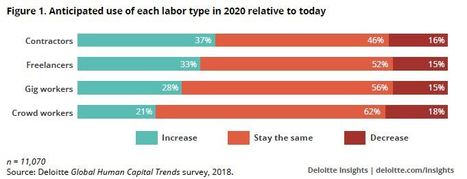
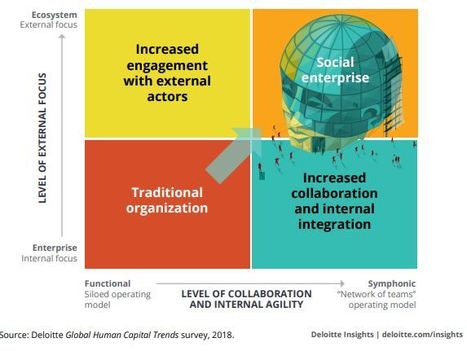
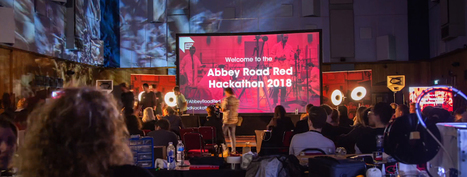




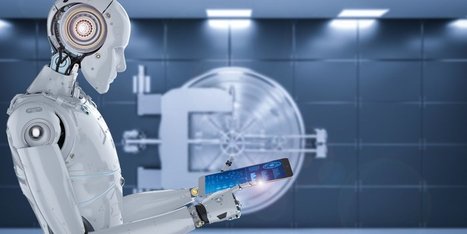
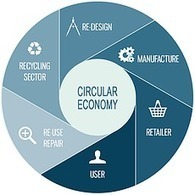

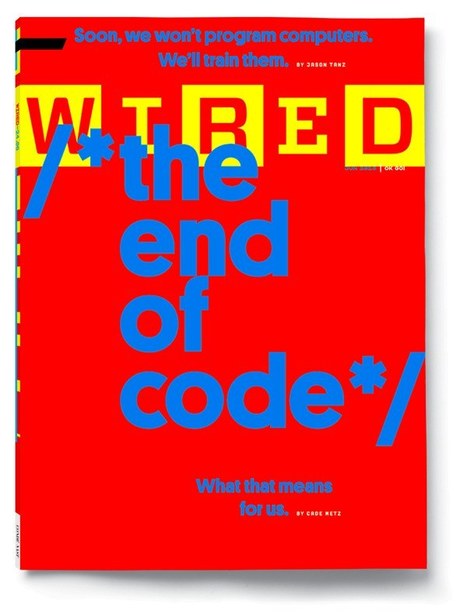

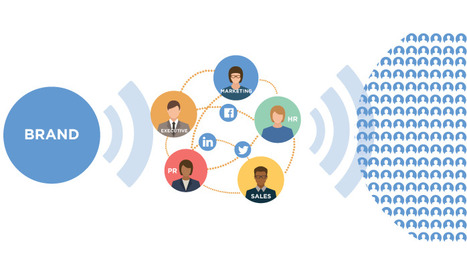


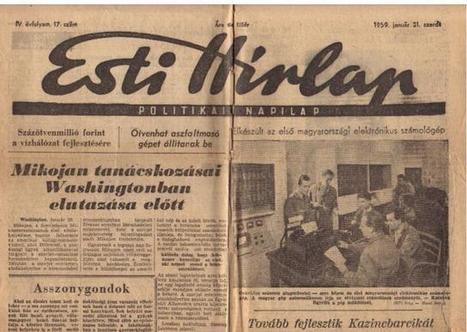
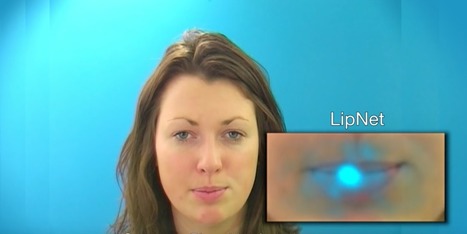



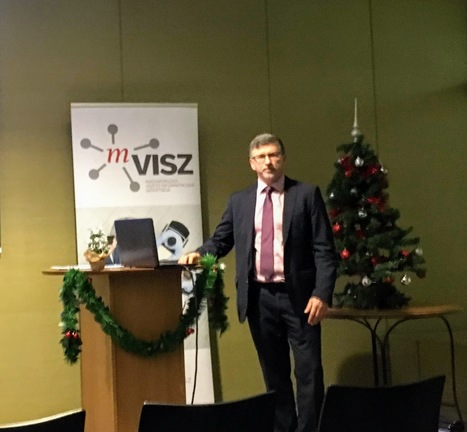

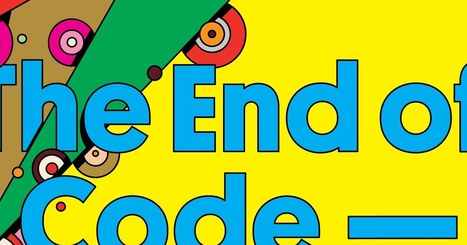





Hogyan használja az iskola az új technológiákat a tanításban és a tanulásban? Erre válaszol a SELFIE, amivel képet alkothatnak önmagukról az iskolák.
Ismerek néhányat, amelyik otthonosan mozog ezen a területen. A VISZ pályázatain találkoztunk velük. Továbbiak:
Ők tanítják a jövő generációit
Kiművelt emberfők
Modern eszközök a középiskolákban
A legjobb középiskolai tanári csapatok - Egy 160 éves gimnázium bizonyult a leginnovatívabbnak
További információ: https://ec.europa.eu/education/schools-go-digital_hu
#EU #EC #EuropeanUnion #SELFIE #education #digital